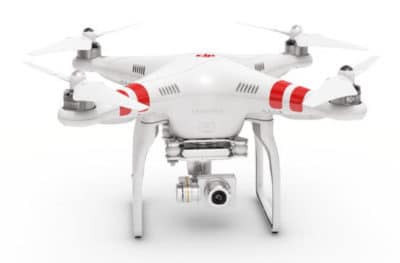How Do Drones Work And What Is Drone Technology
October 1, 2020 by Fintan Corrigan

What is a drone and how do drones work is answered here in this easy to understand article. UAV drone technology is constantly evolving as new innovation and big investment are bringing more advanced drones to the market every few months.
Below, we discuss UAV technology on the most popular drones on the market, which have all the latest drone technology. Most UAV drones will have very similar systems incorporated.https://imasdk.googleapis.com/js/core/bridge3.527.0_en.html#goog_5498145090 seconds of 0 secondsVolume 0%
Also included is the latest list of top drones with cameras on the market right now.
Unmanned aerial vehicle technology covers everything from the aerodynamics of the drone, materials in the manufacture of the physical UAV, to the circuit boards, chipset and software, which are the brains of the drone.
One of the most popular drones on the market is the DJI Phantom series. These drones are very popular with professional aerial cinematographers.
This Phantom UAVs are ideal to explain drone technology because they have everything in one package. It includes the UAV, gimbal and camera. They also have some of the top drone technology on the market today.
In the past few months, more new and highly advanced drones such as the DJI Mavic Mini, Mavic 2, Mavic Air 2, Phantom 4 Pro V2.0, Yuneec Typhoon H3 and Autel Evo 2 have come to the market.
The fast pace of UAV drone technological innovation is tremendous. I’ve included these latest drone technology advancements in the below article. So this article is right up to date including all links.
How Drones Work
A typical unmanned aircraft is made of light composite materials to reduce weight and increase maneuverability. This composite material strength allows military drones to cruise at extremely high altitudes.
UAV drones are equipped with different state of the art technology such as infrared cameras, GPS and laser (consumer, commercial and military UAV). Drones are controlled by remote ground control systems (GSC) and also referred to as a ground cockpit.
An unmanned aerial vehicle system has two parts, the drone itself and the control system.
The nose of the unmanned aerial vehicle is where all the sensors and navigational systems are present. The rest of the body is full of drone technology systems since there is no space required to accommodate humans.
The engineering materials used to build the drone are highly complex composites designed to absorb vibration, which decrease the sound produced. These materials are very light weight.
What Is A Drone And UAV Technology
Below we examine the science and drone technology behind the DJI Phantom UAV. We also have plenty of information on the latest drone technologies from the newest drones on the market.
There are plenty of links, where you can read deeper into various components of drone technology. For example, here is a terrific drone components overview article. This gives information on the individual components seen in most drones.
Drone Types And Sizes
UAV drones come in a wide variety of sizes, with the largest being mostly used for military purposes such as the Predator drone. The next in size are unmanned aircraft, which have fixed wings and require short runways. These are generally used to cover large sections of land, working in areas such as geographical surveying or to combat wildlife poaching.
VTOL Drones
Next in size for drones are what is known as VTOL drones. These are generally quadcopters but not all. VTOL drones can take off, fly, hover and land vertically. The exact meaning of VTOL is “Vertical Take-Off and Landing”.
Quite a few of the latest small UAV drones such as the DJI Mavic Air 2 take VTOL to the next level and can be launched from the palm of your hand.
Radar Positioning & Return Home
The latest drones have dual Global Navigational Satellite Systems (GNSS) such as GPS and GLONASS.
Drones can fly in both GNSS and non satellite modes. For example, DJI drones can fly in P-Mode (GPS & GLONASS) or ATTI mode, which doesn’t use GPS.
Highly accurate drone navigation is very important when flying, especially in drone applications such as creating 3D maps, surveying landscape and SAR (Search & Rescue) missions.
When the quadcopter is first switched on, it searches and detects GNSS satellites. High end GNSS systems use Satellite Constellation technology. Basically, a satellite constellation is a group of satellitesworking together giving coordinated coverage and are synchronized, so that they overlap well in coverage. Pass or coverage is the period in which a satellite is visible above the local horizon.
UAV Drone GNSS On Ground Station Remote Controller
The radar technology will signal the following on the remote controller display;
- Signal that enough drone GNSS satellites have been detected and the drone is ready to fly
- Display the current position and location of the drone in relation to the pilot
- Record the home point for ‘Return To Home’ safety feature
Most of the latest UAVs have 3 types of Return to Home drone technology as follows;
- Pilot initiated return to home by pressing button on Remote Controller or in an app
- A low battery level, where the UAV will fly automatically back to the home point
- Loss of contact between the UAV and Remote Controller, with the UAV flying back automatically to its home point
The latest Mavic Air 2 technology can sense obstacles during automatic return to home.
Obstacle Detection And Collision Avoidance Technology
The latest high tech drones are now equipped with collision avoidance systems. These use obstacle detection sensors to scan the surroundings, while software algorithms and SLAM technology produce the images into 3D maps allowing the drone to sense and avoid. These systems fuse one or more of the following sensors to sense and avoid;
- Vision Sensor
- Ultrasonic
- Infrared
- Lidar
- Time of Flight (ToF)
- Monocular Vision
The DJI Mavic 2 Pro and Mavic 2 Zoom have obstacle sensing on all 6 sides. The Mavic 2 uses both Vision and Infrared sensors fused into a vision system known as omni-directional Obstacle
